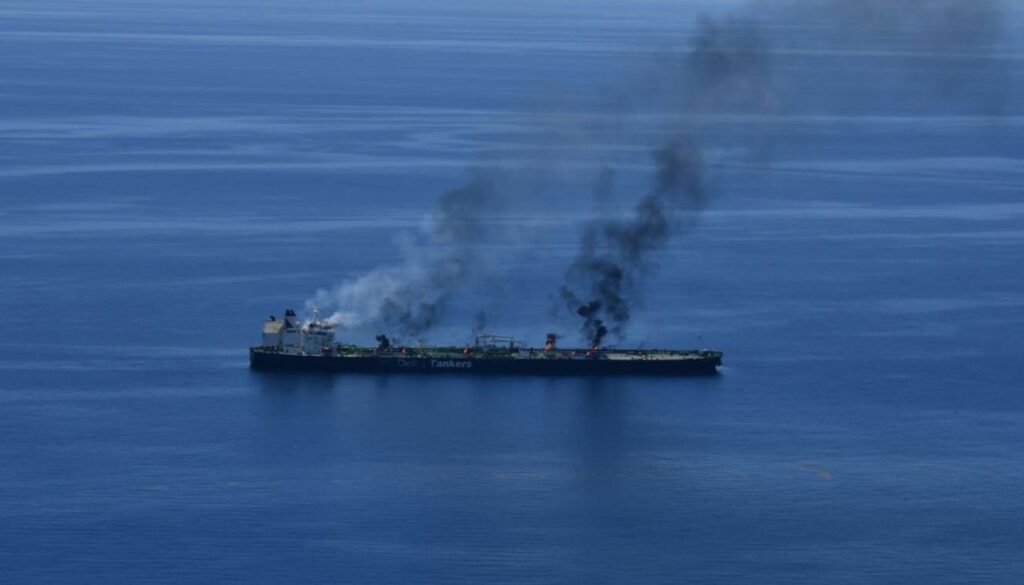With the prosperity of the economy in recent years, sea transportation is also indispensable. As the frequency of shipping increases, the probability of accidents at sea will also greatly increase. Among them, oil tanker fires and oil spills have the greatest impact on the ocean.
There are three main types of oil leaks at sea: First, oil leaks caused by maritime shipping factors. Marine oil spills are mainly caused by collisions between ships and oil facilities, including collisions between ships and offshore oil facilities, or collisions between oil tankers and other ships and offshore facilities. Second, during offshore oil extraction, drilling towers or oil wells sink to the seabed due to explosions or other reasons, causing large amounts of oil leakage. The third is natural factors, such as hurricanes, earthquakes, etc. The less polluting oil spills at sea are condensate and heavy diesel oil that maintains the power of tankers.
Condensate is an ultra-light, colorless oil that is typically a byproduct of natural gas production. After natural gas is produced, the small liquid part that condenses becomes condensate, which is the lightest type of oil and consists of hydrocarbons with carbon chains between 5 and 11. Light oil is characterized by low consistency, fast diffusion, high volatility, and strong acute toxicity, but its ability to sustain pollution is weak and is easily weathered by nature. The industry calls it non-persistent oil. Generally, when light oil leaks out, the risk of fire and explosion is greater, but the risk of environmental pollution is small.
Marine fuel oil is a heavy oil, black in color. Heavy oil is characterized by high viscosity, slower diffusion than light oil, poor volatility, and weak acute toxicity. However, it has a strong ability to continuously pollute and is very difficult to clean. It is called persistent oil in the industry.

If it is heavy oil, it will cause immeasurable damage to the ocean. For example, on March 16, 1978, the “Amoco Cadiz” carried 223,000 tons of light crude oil from the Persian Gulf through the Netherlands and was scheduled to stop at Lyme Bay. However, the ship encountered a storm. The out-of-control “Amogo Cadiz” hit a rock near the Brittany Peninsula in France and quickly sank to the bottom of the sea. All the crude oil on the ship leaked into the sea. The 19-kilometer-long oil slick caused by the accident was blown toward the French coast by northwest winds. Over the next month, prevailing westerly winds spread the oil slick about 160 kilometers east of the coast. A month after the spill, the total area of the oil slick included about 200 miles (320 kilometers) of coastline. 76 community beaches in Brittany contaminated by oil. It is a disaster for fisheries and marine life and the environment. If it is located in a coastal area, it may involve the operation and income of coastal tourist attractions, industrial power plants, desalination plants, marine aquaculture farms, ports and terminals, etc.

Most oil products flowing into the sea will have the following main symptoms:
- Spread: Oil forms a very thin oil film on the sea, and the coverage area continues to expand.
- Evaporation: The volatile part of the oil will evaporate into gas.
- Fragmentation: The formed oil film is blown away by waves and wind into several small pieces of oil film.
- Dispersion: The oil is broken into very small oil droplets by wind and waves, suspended in water about ten meters deep, diluted by ocean currents or slowly degraded by microorganisms in the ocean.
- Emulsification: Oil and seawater combine to form an oil-water emulsion, which doubles in volume and increases in viscosity.
- Stranding: The oil film drifts along the ocean currents and winds to the seaside and touches the shore. Touching the shore is a taboo in oil spill accidents. Once the oil hits the shore, it will cause significant damage to the natural ecology and human economy of the coast, double the workload of clean-up work, and produce a large amount of oily garbage.
There are also very small amounts of spilled oil that undergo photooxidation, dissolution, and bio-degradation. But they are all in trace amounts, or the speed is extremely slow.

How to take measures against the above? Containment and recovery of oil spills on the sea surface are the most common ways to relieve oil spills. Specifically, ships are used to tow offshore oil booms to contain the floating oil, and then oil skimmers (wastewater oil collectors) are used to recover the oil. The principles are different. For oils with different viscosities, different types of oil skimmers need to be selected. Sea surface containment and recovery is the most common, most visible, and most environmentally friendly way to discharge oil spills. However, it uses a lot of resources, has high requirements on sea conditions, serious secondary pollution, and relatively low recovery efficiency. For harbor areas, the highest recovery rate is only 20%, and for open sea areas, the recovery rate is generally less than 10%. It can be seen that the recovery rate is very low, so real-time monitoring of oil spills at sea uses sensors for real-time monitoring and wireless transmission. In this way, once the oil leak reaches a certain level, attention will be paid to reduce the probability of marine pollution.
